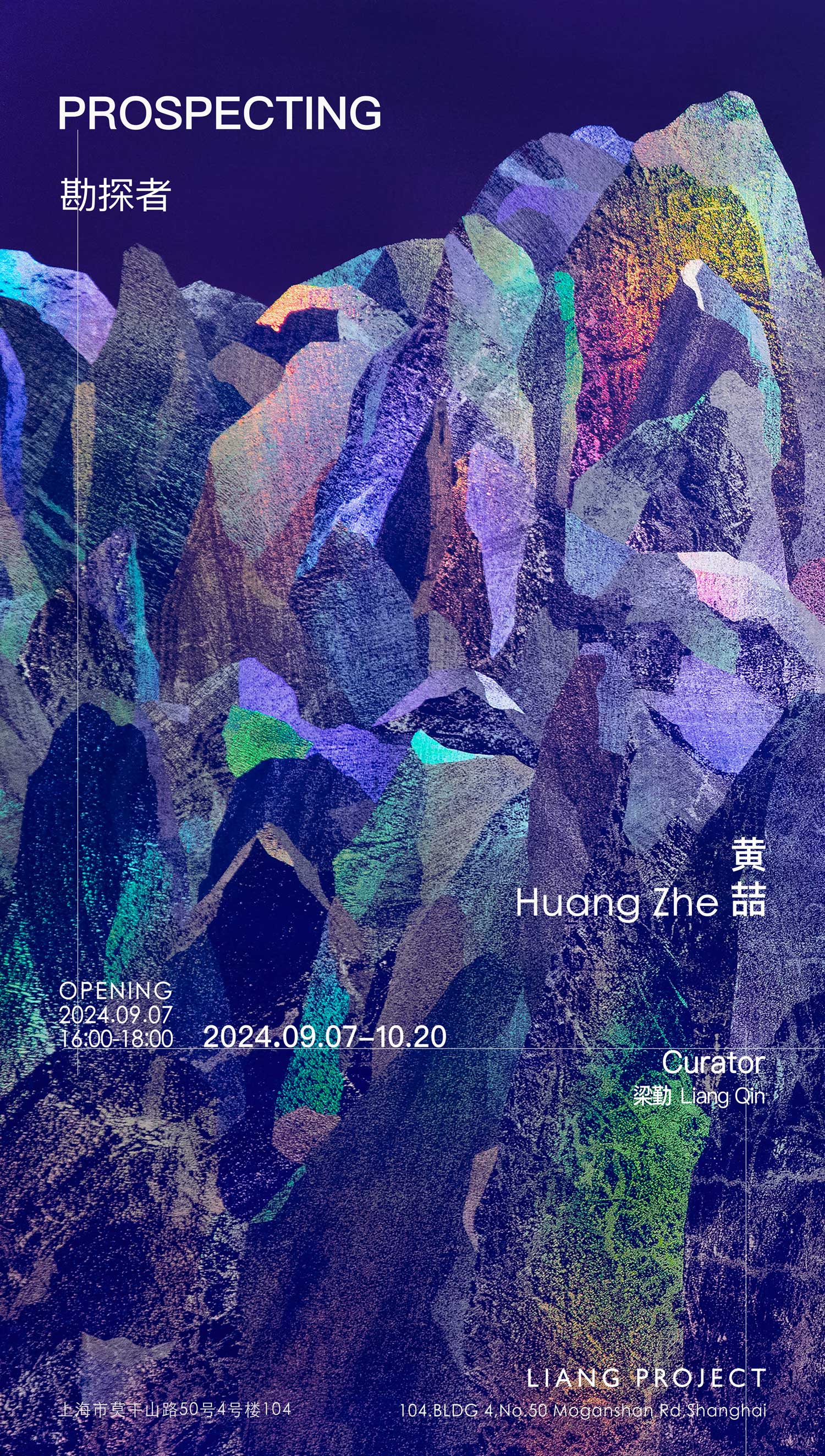展期 Period:
2024.9.7—2024.10.2
艺术家 Artist:
策展人 Curator:
地点 Venue:
前言 Introduction:
展览《勘探者》呈现了黄喆《轴心》《千寻》《撰石》《无量的瞬息》四个系列的最新作品。新作品延续了艺术家对考古的关注,在艺术实践中思考了勘探与历史的关系。
福柯用“勘探”的方法挖掘特定时代的知识体系,以考古学的方法去探索“非连续性”的历史,在断裂、转变与重构中找寻历史中的话语结构。以勘探为线索,艺术家试图以实践去回看某个时期,让山石成为一种“档案”,探讨回看历史与建构关系中的启示。
《轴心》系列让我们回望向雅斯贝斯(Karl Jaspers)的“轴心时代”:在同一历史阶段中对“终极关怀的觉醒”。轴心如同细胞的无限分裂,将历史带入了一种内在关联中。并在细胞中嵌入了一种内核,成为了看待与面对历史的映照,给予了希望的可能。当历史的卷轴徐徐拉开,看到了坚如磐石的意志,包容的平静,构建的缜密,凝聚的力量。这些渗透到意识的倒影里,形成了参照,抵抗了虚无。
《千寻》系列试图探究宋代文人从唐而转内的自省。为何在石中倾注自我的理想,找寻驰骋与敏感的寄托。文震亨在《长物志·水石》写到,“一峰则太华千寻,一勺则江湖万里。”千寻便是银河,是古人对无穷无尽最宽广的想象。当千寻指向文人石时是在说以微见广,自然奇妙,更是想通过作品呈现出文人石自身不能言的开阔,它不封闭而是贯穿四周,在不规则的形态中突破限制生生不息,在内有星河中陡然触及了心灵的温度。
《撰石》系列灵感来源于远古石阵,关于石阵往往联系着星象、宗教、记忆、精神标志等种种猜想,石阵的建造背后是我们想象中的西绪福斯,而建造的终点是否是找寻光亮的起点。
《无量的瞬息》系列像是历史档案的切片。作品呈现出如岩层的某个剖面、风化岩石的表面、结晶体的聚合等。一个由内外应力与时间共同作用的世界,如同档案中的结构,虽微小却在微观中洞悉机制的形成。
The exhibition Prospecting presents four series of HUANG Zhe’s latest artworks, Axis, Such as The Milky Way, Composing Stones, and Innumerable Meanings in a Twinkling, which continued HUANG's interest in archaeology, and his reflection on the relationship between exploration and history in his artistic practice.
Foucault used the method of ‘prospecting’ to excavate the knowledge system of a specific era, to explore the history of ‘discontinuity’, with the technique of archaeology, and to search for the discourse structure of history in the process of rupture, transformation, and reconstruction. Taking ‘prospecting’ as a clue, HUANG Zhe tries to look back at a certain period with his practice, letting the rocks become a kind of ‘archive’, and exploring the revelation in the relationship between looking back at history and its construction.
HUANG Zhe’s Axis series takes us back to an ‘awakening of the ultimate concern’ in the same historical phase, as the ‘Axial Age’ coined by Karl Jaspers. Like the infinite division of a cell, the axis brings history into an inner connection and is embedded as a kernel in this cell. It mirrors the way we look at and face history and gives us a possibility of hope. When the scroll of history is drawn back, one sees a rock-solid will, a tolerant calm, and a well-constructed, cohesive strength. This will permeate the reflection of consciousness, form a reference, and meanwhile, resist emptiness.
Series Such as The Milky Way, attempt to explore the introspection that moved from the outer world to the inner sphere, held by the literati from the Tang Dynasty to the Song Dynasty; to explore why these scholars poured their ideals into stones and sought its support by an emotional of freedom and sensitivity. As WEN Zhenheng from the Ming Dynasty wrote in his book Changshu Zhi - Water and Stone, said, ‘A peak wall indicates the magnificence and precipitousness of Huashan, a spoonful of water reflects ten thousand miles of the rivers and lakes.’ The ‘magnificence and precipitousness’ here, are compared to the Milky Way, as the broadest imagination of the ancients for infinity. When these images point to the scholar’s rocks, it is to say, that they are a microcosm of the vastness and the wonder of nature, moreover, it is HUANG Zhe, the artist, who tries to present an unspeakable openness of the scholar’s rocks through the works. These images are not closed, instead run across their surrounding area, break through the limitations of the endless life in the irregular form, and steeply touch the temperature of the human heart, like in an inner Milky Way.
The Composing Stones series is inspired by the ancient Stonehenge, which is often associated with astrology, religion, memory, spiritual symbols, and other speculations. Behind the construction of Stonehenge, is a ‘Sisyphus’ in our imagination, and to wonder, whether the end of the construction, is the beginning of the search for light.
And the series of Innumerable Meanings in a Twinkling is like a slice of a historical archive. These works present, for example, a section of a rock formation, the surface of a weathered rock, the aggregation of crystals, and so on. A world that is acted by internal and external stresses plus time, like the structures in this archive, they are tiny but known through the formation of mechanisms with a microscopic insight.

